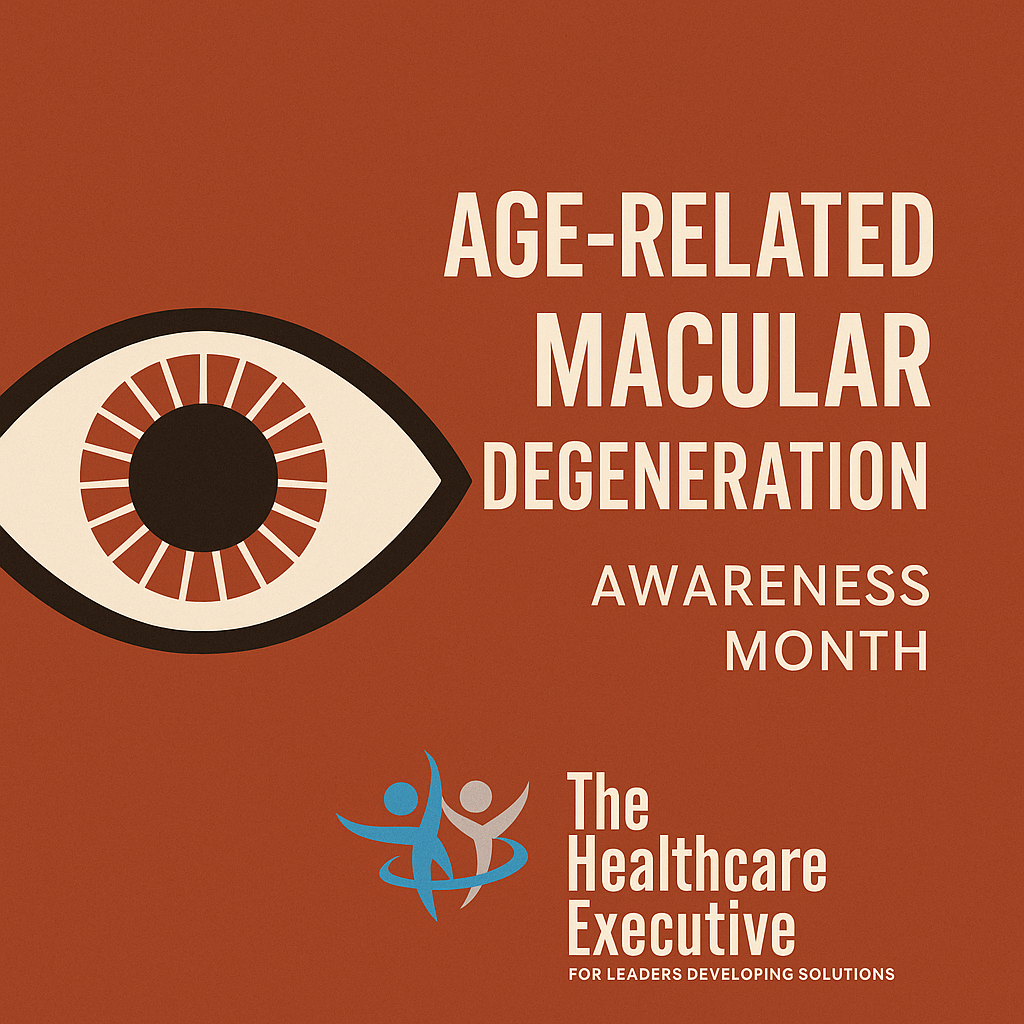Age-Related Macular Degeneration Awareness Month 2025 | The Healthcare Executive

- Posted by Greg Wahlstrom, MBA, HCM
- Posted in Health Observance Calendar
Hospital Executives Can Lead the Way in Vision Health
Published: February 4, 2025
February is Age-Related Macular Degeneration (AMD) Awareness Month, a critical time to spotlight one of the leading causes of vision loss in people over 50. As hospital executives and health system leaders, addressing age-related eye conditions requires not only public awareness but also strategic intervention across population health frameworks. AMD affects the central part of the retina, making tasks like reading and recognizing faces increasingly difficult for patients. Health systems like Bascom Palmer Eye Institute have developed specialized vision programs and low-vision rehabilitation services tailored to aging populations. By expanding these efforts and integrating routine eye screenings into primary care pathways, healthcare leaders can help reduce the burden of late-stage vision loss. The National Eye Institute provides valuable resources that hospitals can distribute to educate patients about early warning signs. Strategic outreach during AMD Awareness Month can directly influence community well-being, especially for at-risk populations.
Early detection and timely treatment are the cornerstones of AMD management. While there is no cure for age-related macular degeneration, advancements in treatment such as anti-VEGF injections and lifestyle interventions can delay progression. Hospitals can strengthen awareness efforts by partnering with local senior centers, optometrists, and community-based organizations to promote free eye exams and preventive education. At Kellogg Eye Center at Michigan Medicine, interdisciplinary care teams are integrating ophthalmology with geriatrics to better manage vision outcomes. These collaborations highlight the importance of whole-person care and health equity for older adults. Executive leaders can support such efforts by prioritizing cross-specialty partnerships in strategic planning. February is an opportunity to elevate eye health as a systemwide quality priority, not just a specialty service.
Health executives must also consider the role of technology and data in AMD prevention initiatives. Predictive analytics, risk stratification tools, and AI-enabled diagnostics are becoming more effective at identifying patients who may be at higher risk of progression. Systems like Mass General Brigham are piloting vision care algorithms to support early intervention in clinical workflows. Leveraging EHR data for targeted outreach can improve the precision of health messaging and enhance screening compliance among aging patients. Executive leadership can drive these innovations by investing in digital infrastructure that enables scalable, evidence-based prevention. This aligns with broader goals of value-based care and community-centered engagement. By taking proactive steps during AMD Awareness Month, systems can build lasting prevention pipelines that improve outcomes and reduce avoidable blindness.
As a part of our Health Observance Calendar, The Healthcare Executive urges hospital leaders to embrace AMD Awareness Month as a strategic opportunity. Organizational messaging, internal staff education, and community partnerships should align around preventing vision loss and promoting healthy aging. We encourage you to explore our related article, Rebuilding Trust in Healthcare Leadership: A Blueprint for 2025, which explores how leadership transparency and public trust are essential in prevention-focused care. Executive involvement in public health campaigns sends a powerful message about organizational values and population health goals. Hospitals that champion awareness campaigns like this one position themselves as leaders in preventive health and aging care. Let February be the start of a renewed commitment to vision health and community engagement.
For system leaders and public health teams, now is the time to assess your organization’s engagement with AMD prevention efforts. Consider how outreach, innovation, and partnerships can align to reduce vision loss across the populations you serve.
Internal Link:
External Links:



